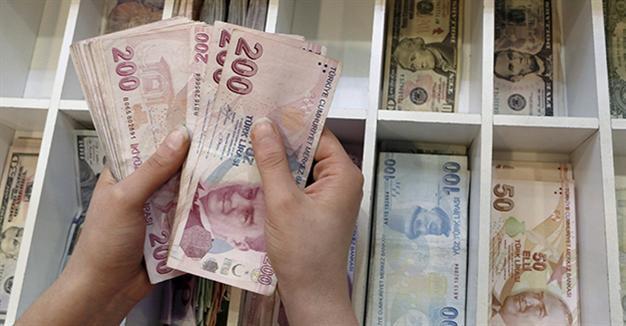Turkish Lira seen weakening further but no Russia-style rout
LONDON - Reuters

REUTERS photo
The Turkish Lira may have 5 to 10 percent further to fall against the dollar if Turkey’s credit rating is cut to junk this month, though a downgrade should weigh less heavily on markets than on Brazil and Russia last year, according to analysts.The currency has already been under pressure, tumbling 7 percent against the dollar following the failed July 15 coup and the subsequent government crackdown on opponents, but has since recouped around 2.5 percent.
But a slowing economy and political tensions, within Turkey as well as with the West, mean there are more storm clouds gathering.
Finally, Moody’s and Fitch will review their Turkey ratings on Aug 5 and Aug 19 respectively - a cut to junk is expected from Moody’s, either this week or in coming months.
The median forecast from a Reuters poll of 27 analysts was for the lira to fall to 3.12 in six months and 3.18 in a year, implying 5 percent depreciation by next July.
But currency strategists have tended to underestimate lira weakness, suggesting the consensus view could prove too optimistic.
Many banks are more pessimistic - the weakest six-month forecast was for 3.33 per dollar. Commerzbank which predicts a 3.25 rate by year-end, warned this may be reached sooner.
UBS strategist Manik Narain says while the lira looks fairly valued on consumer inflation-based REER, it is relatively expensive when the REER is calculated on the basis of unit labor costs (ULC).
Labor productivity ‘matters’
Essentially the cost of labor used in generating output, ULC is a broad competitiveness gauge. Official data shows Turkish labor productivity lags the European average, rising 1.5 percent a year in the past five years while wage growth averaged 5 percent.
Narain says the lira’s ULC-based REER is 10-15 percent above its five-year average, and indicates it should depreciate to near 3.25 per dollar.
“You’ve seen very strong ULC rises in Turkey, with wages growing 14-15 percent in some sectors and close to zero productivity growth,” he said.
“This helps to explain why the current account deficit has been so sticky and export performance hasn’t recovered.”
Another reference point on where the lira could trade is CDS or credit default swaps, used by investors to insure against debt default or restructuring.
A downgrade to the top junk rung roughly indicates five-year Turkish CDS at 300 basis points, said Koon Chow, emerging markets macro and FX strategist at UBP Asset Management.
“If you put on some risk premium that’s another 50-100 bps so that’s 350 bps-plus,” Chow said. “When you look at the historical relationship between CDS and currency and extend Turkish CDS to 350, it implies dollar/lira at 3.2 (per dollar).”
But most see a rout on the scale experienced by Russia and Brazil as unlikely - UBP’s Chow described Turkey’s situation “as 180 degrees different.”
















